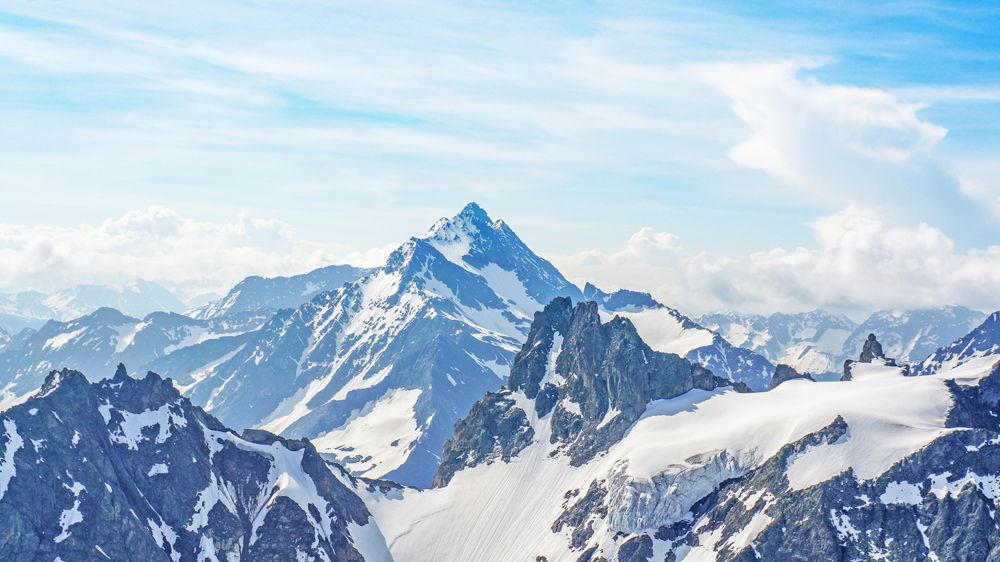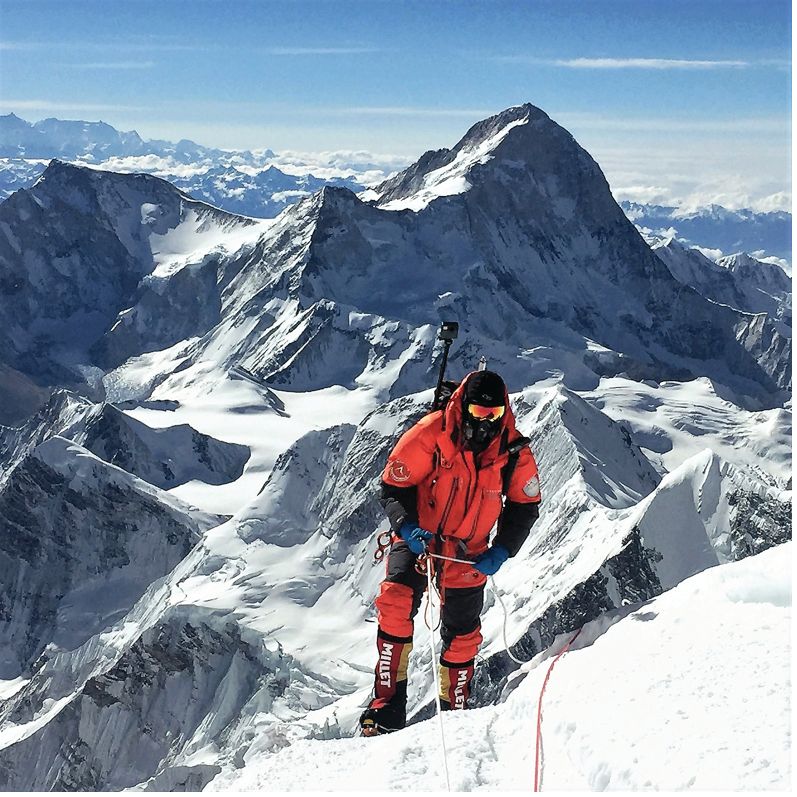Publication
Article
Psychiatric Times
THE QUEST: Nepal Lets You Reach for the Majesty of the Summit
Author(s):
"This film beautifully uses Kathmandu to mentally transport you, like the climbers, into the journey ahead."
iamnong_AdobeStock

REEL INSIGHTS
It’s 40 degrees below zero. You are breathing thin air with one-fourth the sea level of oxygen. You haven’t slept in 2 days. Every step you take feels like your legs are encased in concrete. You are flanked by 100-m crevasses.
Is this some form of torture? Maybe the photo to the right is of a climber frozen in place since 1962? Might this be payment due for buying all that nonreturnable gear at Eastern Mountain Sports? Or perhaps it is a Himalayan scene from a forthcoming Hangover film?
Alex Harz approaching the south summit of Mt. Everest. Copyright: Alex Harz

It’s worse. Because it’s no joke to climb to Everest Base Camp (17,500 ft) in Khumbu, Nepal, after having flown to remote Lukla airport (9400 ft) on what looks like an old toy plane. Then there is the climb to camps 1, 2, 3, and 4 (the last at 23,000 ft)—the way stations for those whose minds are set on ascending to the summit (29,032 ft).
Let’s start in the capital city of Nepal—Kathmandu (4600 ft, population roughly 846,000, without its “urban” sprawl)—as did the climbers in THE QUEST: Nepal. Tourism dominates your first day as your local guide, fluent in English, herds you to a gargantuan market of narrow, serpentine streets, lined by every stripe of merchant. Hindu and Buddhist shrines are features of the tour, some restored or under reconstruction after the earthquake (7.8 on the Richter scale) in 2015. Never sidestepped on the itinerary is the crematory, open 24 h/d, where followers of Hinduism burn their dead and sweep their remains into a tributary of the Ganges River.
This film beautifully uses Kathmandu to mentally transport you, like the climbers, into the journey ahead. You mix with its people, pay respect to its historic shrines, witness its dead being cremated in the open air, and realize that you are very far from home, in many ways.
I was in Kathmandu in 1995, beginning a trek to the base camp of Annapurna (13,550 ft), the 10th-highest mountain in the world (26,545 ft), which is as deadly as Everest to those seeking its summit (not me). The people of Nepal radiate a warmth and welcoming that is now uncommon. This immersion into Kathmandu will be the most significant Nepalese experience that most tourists—and they are legion—will have. THE QUEST offers a tender and detailed account of the city—a gift, and no less so than the icy sites ahead.
The Everest quest then moves on to Lukla. THE QUEST concentrates its cameras on individuals, especially Ryan Waters (the American lead climber), touching lightly on his climbing team, the Nepalese Sherpas, and the guides. Waters is tall, fair, lean, and collegiate looking, radiating keen interest and humanity; only later will you see his unwavering grit, when the going gets impossible by most human standards. It is hard to read him—to appreciate what has driven him to this over-the-top and potentially fatal adventure. About 300 climbers have died on Everest; we see the cairns marking their burial sites along the ascent.
There is not much tech talk in the film’s portrayals (not that I wanted it). We see the extraordinary mountaineering equipment and the massive support staff, but they do not take center stage. I had a group of 10 assisting my 4-person, nontechnical climb. There is not a word in the film about funding THE QUEST, which surely was a bargain considering the cost of an Elon Musk SpaceX rocket launch.
We march the white mountain from one harrowing place to another, as if beside Waters and his team. This is as close a perspective of the mountain and him as is possible. Watching Waters persevere with a smile begs the question: Why would an individual subject himself to what otherwise appears enormously punishing?
Metaphor and simile are useful in considering this question. Everest is a massive mountain scraping the sky, cold and unforgiving, lording its dominance over the likes of us. Climbing it would be like a heavyweight boxing championship: Glory to the winner of the battle, although the mountain will not feel the punches—you will. Climbing the mountain must also be an exercise in seeking to dominate your fearful, less-than-invincible self.
The amygdala is an almond-shaped nerve bundle, barely an inch long, within the brain’s temporal lobes. It is the origin of our fears (from “fight or flight” to intimacy). The mountain challenges the amygdala, as the amygdala challenges the mountain. Talk about David and Goliath.
A quotidian life could be transformed by the majesty of the summit. There would be pain, but not the variety that debilitates—rather, a pain that runs from head to toe and shouts that you are truly alive. No doubt about it.
The loneliness that pervades our lives, which is as much a health risk as 15 cigarettes a day, would evaporate—diffuse into the clouds. Because in extreme climbing, the climber has 2 intimate and ardent bonds. One is to the fearsome giant, the mountain to be tamed, the yin to your yang, and the source—ironically—of the juice in your blood. The other is the extraordinary attachment to your teammates, leaning into danger as you are—the eyes, ears, and desire beyond your own. It is this type of attachment the military trains into soldiers so “no one is left behind.” You are bathed, if you will, in closeness otherwise almost unimaginable.
Reaching THE QUEST summit seems anticlimactic, but it is a rare moment. The film ends in triumph, richly deserved. Yet, it is still less than we can comprehend. If you ever meet a mountaineer, offer him or her a drink in exchange for a glimpse into their soul.
To learn more about THE QUEST: Nepal, visit https://www.thequestnepal.com.
Dr Sederer is a Contributing Writer for Psychiatric TimesTM, and a psychiatrist, public health doctor, and nonfiction author.







